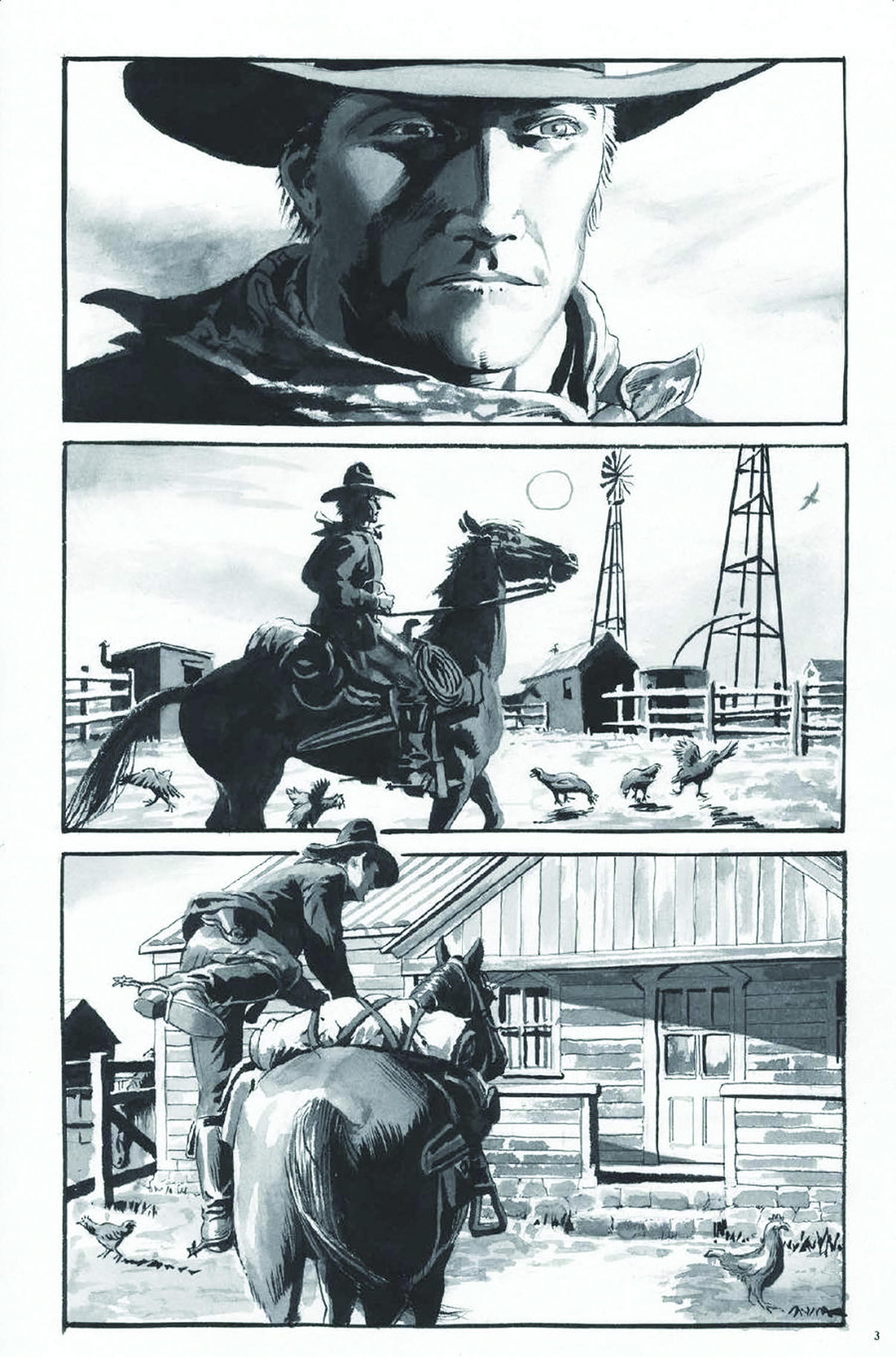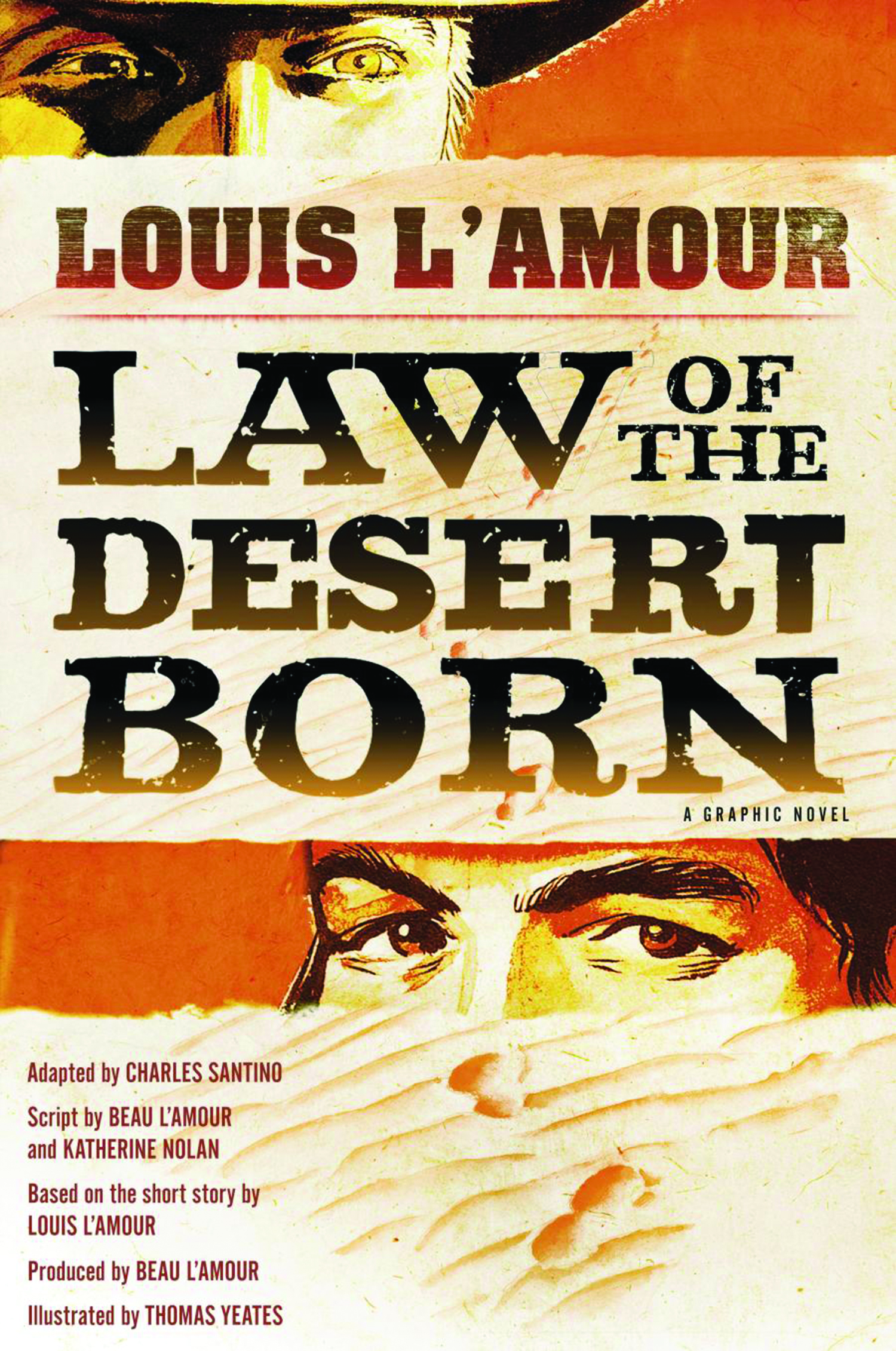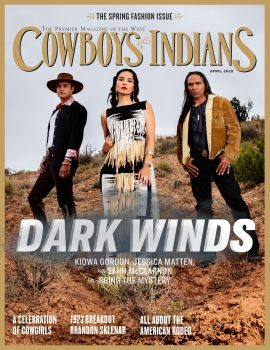
Louis L'Amour's original pulp western Law of the Desert Born gets a deluxe graphic novel treatment thanks to the efforts of his son, Beau.
Among serious readers of westerns, there is a joke that goes something like this: Why does every bookshelf need at least three Louis L’Amour titles? Because if there are less than three, it’s just a shelf.
Whether the titles are vintage Bantam paperbacks with foxing on the cover, the brittle yellow pages lovingly marked with dog-eared corners, or dark brown leather collectors tomes embossed with gold foil, L’Amour’s books and stories have proven to be the sources for many of the most memorable westerns of the last 70 years.
Prior to his death in 1988, the man known as “America’s Storyteller” enthralled readers of all ages with tales that ran the gamut from crime (his first crime short story, “Anything for a Pal,” 1935) to a cold war spy thriller (his penultimate novel, Last of the Breed, in 1986). But although he got his start writing for the many pulp magazines popular in the 1930s, cutting his teeth with tales of adventure on the high seas, World War II Pacific Theater spy action, and even all-American football stories, it was with westerns that L’Amour truly found his fans.
“Law of the Desert Born,” the first of L’Amour’s post-war westerns, was published in the April 1946 edition of Dime Western Magazine — and it seems fitting that this particular story has found a new incarnation as a graphic novel. At its heart, Law of the Desert Born is the story of two men who are caught between their own code of justice and their struggles with the mistakes and misfortunes of their pasts: one, a rustler who has been given a chance to change his life, the other a half-Apache outcast whose only chance at freedom lies with his quick wits and courage.
L’Amour’s stories frequently involve characters attempting to reclaim or reform their lives — a trait often found in westward pioneers — while trying to somehow stay true to an individual moral code. It’s a common convention, but in the hands of an expert storyteller it has the ring of truth and the luster of suspense. L’Amour’s narrative style always makes the Western landscape’s vastness seem comprehensible, with a balance between taciturn and tender that makes his cowboys seem the most believable — and his outlaws seem the most desperate.
The adaptation of the Law of the Desert Born graphic novel holds fast to L’Amour’s unmistakable tone, in no small part due to the participation and guidance of his son, Beau L’Amour.
“This particular iteration of Law of the Desert Born started out as a radio play, and later, a screenplay. I shopped it around and nearly had a deal with a studio ... but it never came to pass,” says Beau.
Working on the script with longtime collaborator Katherine Nolan, Beau took great pains to re-create the story for a more dramatic medium. The two previously produced other popular audio dramas based on the L’Amour literary canon, but they found the process of recording Law of the Desert Born particularly inspiring.
Once the audio was released, “[Nolan] and I would talk about it occasionally, about how fun it had been and how the story had come to life,” Beau says. “I thought it would be a good idea to make it work as a screenplay. But we also had some goals for it. We wanted it to be warmer, more about emotions than just the mathematics of survival. We started restructuring things and figured out ways to deepen the relationships.” After thinking about the screenplay in terms of scenes and storyboards, it seemed a logical leap to working with adapter Charles Santino to fit it into the graphic novel format.
Following the characters’ path through New Mexico’s Jornada del Muerto desert and Carrizozo Malpais lava fields, the illustrated landscape of Law of the Desert Born comes to life thanks to the expert hand of artist Thomas Yeates. An award-winning comics illustrator, Yeates is currently the artist on the Prince Valiant comic strip, which he calls “a dream job.” Beau likens the role of the veteran artist to that of a combination cinematographer/actor.
“He’s making choices about lighting, but then he’s talking to me about the inner lives of the characters,” Beau says. Describing the countless hours of meetings and research that went into the project, he adds, “I had hundreds of images for every tool, every saddle, every costume. Before we settled on Thomas, I was worried that I’d get somebody that didn’t know the West or American culture. But in the course of the project we talked several times a week, discussing every page. I’d keep him aware of what he had to take into consideration for the scene he was illustrating, or what the next scene would require.”
With each turn of the page, Law of the Desert Born takes you on a journey deeper into those incredible desert vistas, and deeper into the conflict between its characters. Thanks to Yeates’ elegant black-and-white drawings and the superb pacing of Charles Santino’s adaptation, readers are in for a real treat — with an amazing level of detail and ambience that breathes new life into Louis L’Amour’s already stunning story.
“It just came to life again and again,” says Beau. “The story just kept having more to give.”
From the October 2013 issue.













